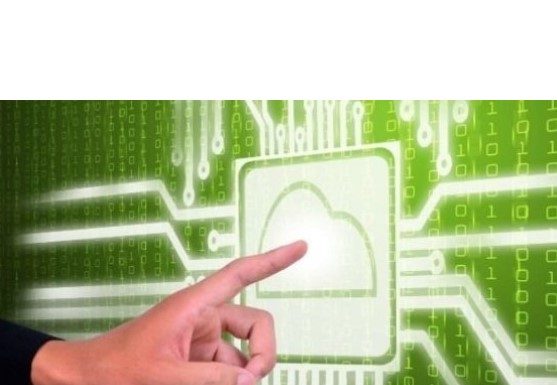The Internet Society celebrated 25 years of work to “promote the open development, evolution, and use of the Internet for the benefit of all people throughout the world” this past September. The Internet Society supports the Internet Engineering Task Force (IETF), the well-known Internet standards body. It’s hard to argue with their success – the Internet is now used by about 52 percent of the people in the world (and 88 percent in North America).
celebrated 25 years of work to “promote the open development, evolution, and use of the Internet for the benefit of all people throughout the world” this past September. The Internet Society supports the Internet Engineering Task Force (IETF), the well-known Internet standards body. It’s hard to argue with their success – the Internet is now used by about 52 percent of the people in the world (and 88 percent in North America).
Despite this significant achievement, some experts believe that the Internet is getting ‘old in the tooth’ and needs to be updated. Concerns about security, privacy, appropriate use, national restrictions, cultural impact, fairness, trust, and safety are being discussed by Internet providers, users and regulators. People want the Internet to help manage vulnerabilities and protect against a variety of threats.
Is the Internet (especially its core components) really broken, or in the process of slowly breaking? And if it is, should we be worried? Life in 2017 would be quite different without connected mobile phones, web searching or the online games people play.
Existing technical challenges
In a 2015 article, Martin Geddes, a telecommunications expert from the UK, claimed that the “Internet is just a prototype.” He stated, among other things, that “we need a re-architecting of the Internet around sound fundamental principles, reversing the many technical mistakes of the past. The absent security, performance, mobility and resilience capabilities need to be incrementally added back in. We know how to do this, but the several key replacement technologies remain nascent.”
Another comment comes from Brian Carpenter, an Internet engineer, in IP Addresses Considered Harmful. He states that “the Internet has got itself into deep trouble by over-reliance on IP addresses.” He cautions, however, that “there’s no point in doing anything that is not deployable. Only incremental change is physically possible.”

In December 2016, Walter Isaacson, President and CEO of The Aspen Institute and former chairman and CEO of CNN, wrote about Internet issues in his article “The internet is broken. Here’s how to fix it.” He suggested that an Internet refresh should include a payments mechanism for content producers, source authentication for emails, extensions to the underlying packet technologies and deep integration of security.
Although the details are best left to the engineers, the key technical challenges are well-understood by most Internet experts. Some examples are:
Addressing: IPv6 standards for expanded Internet addressing and IP security became available in 1998, but the transition from IPv4 to IPv6 has been difficult and slow (only approximately 23% of networks advertise IPv6 connectivity today). Billions of IoT devices will need new addresses over the next few years.
Domain name system (DNS): DNS provides the essential service of translating host names into Internet addresses. Improved security for DNS has been addressed by the DNS Security Extensions standard, but the required upgrades have also been slow to be rolled out.
Security, privacy and trust: Security was not originally integrated into the Internet protocols. Improving the security mechanisms and providing better support for privacy have become important due to the increasing number of data breaches, the volume of email spam and the growth of ransomware. Spam, for example, could be substantially reduced or even eliminated if email source authentication were provided.
Protocol improvements: The core Internet protocols are now decades old. TCP/IP improvements in areas such as multicast, multihoming, rapid address changes and roaming are discussed in the IETF, by academic researchers and more recently by IoT developers.
Interoperability and integration: The Internet is already an open system, but emerging applications such as IoT (which require everything from toasters to airplanes to be interoperable) are demanding new levels of connectivity and distribution. Avoiding a proliferation of dedicated and incompatible device protocols would avoid new levels of complexity.
Other important Internet system-level requirements also exist, such as expanded options for quality of service and more resilience in the face of natural disasters. Google, for example, recently proposed to use its Internet balloons to more rapidly restore communications in Puerto Rico.
Clouds are the new Internet hosts
The Internet must support both very small and very large hosts. At one end of the spectrum are IoT sensors and actuators that could be anywhere – in homes, hospitals, cars or even light bulbs. Low-power, low function devices, such as a door lock status or video cameras, are often used in IoT systems. At the other end of the spectrum are the web-scale, multi-tenant, multi-function cloud environments operated by global service providers including Amazon AWS, Microsoft Azure, IBM Bluemix and Google Cloud Platform.
Another area of rapid development is intercloud networking. Cloud back-end networks are moving towards an internet of cloud networks. Clouds are becoming a new form of Internet host system.
Some industry leaders believe that cloud computing and the networking of clouds will ultimately change the structure of the Internet. Rob Lloyd, formerly of Cisco, may have been ahead of his time in 2014 when he described Cisco’s Intercloud as the next Internet, but this vision is being taken up by organizations such as the National Institute of Standards and Technology.
Reinventing the Internet – clean slate alternatives
Digital transformation, which encompasses business innovation inspired by advances in digital technology, can also be applied to reinventing the Internet industry. The complex technical, operational and social transformations that are underway today in many business sectors all depend on good communications services that are highly automated, especially in the areas of security and privacy, service provisioning and distributed resources.
Internet transformation projects can be divided into three categories: incremental changes (such as changing from IPv4 to IPv6); parallel operation (more application-specific protocols operating in parallel, much like TCP and UDP); and clean slate replacement.
Replacing current Internet protocols is the most transformative approach but also the most disruptive. Nevertheless, two research projects have taken up the ‘clean slate’ challenge and are being promoted as potential architectures for the next generation Internet.
Content Centric Networking: The basic idea is to make content addressable instead of host locations. This approach is also referred to as Information-centric networking or Named Data Networking (NDN). According to the NDN project, the aim is to “develop a new Internet architecture that can capitalize on strengths — and address weaknesses — of the Internet’s current host-based, point-to-point communication architecture in order to naturally accommodate emerging patterns of communication. By naming data instead of their locations, NDN transforms data into a first-class entity. The current Internet secures the data container; NDN secures the contents…”

Recursive InterNetwork Architecture (RINA): The basic premise of RINA is that all networking is inter-process communication. RINA researchers believe this leads to a much simpler set of networking protocols. RINA eliminates some of today’s Internet issues “inherently and without the need of extra mechanisms for mobility, multi-homing and Quality of Service, provides a secure and configurable environment, motivates for a more competitive marketplace and allows for a seamless adoption.” The RINA approach was first described in John Day’s book, Patterns in Network Architecture, almost a decade ago. Implementation is now ongoing in several European research projects and it has been submitted to the European standards organization ETSI for consideration. RINA is compared to Internet protocols in a blog by Martin Geddes entitled Network architecture research: TCP/IP vs RINA.
Do we need to fix the Internet?
No one would disagree that the Internet has been successful beyond its creators’ wildest dreams. The Internet of 2017 may not yet be visibly broken but adding band-aids, patches and private extensions is not a good strategy for the future. There are reasons to be worried!
The old saying that “if you aren’t moving forward, then you’re falling behind” applies equally well to the Internet after 40 years of operation. A digital transformation of the Internet to keep up with the innovations resulting from cloud computing, mobility, IoT and big data is desirable and may soon be essential.
It may still be called “the Internet” in 2027, but it won’t be the same under the covers.








